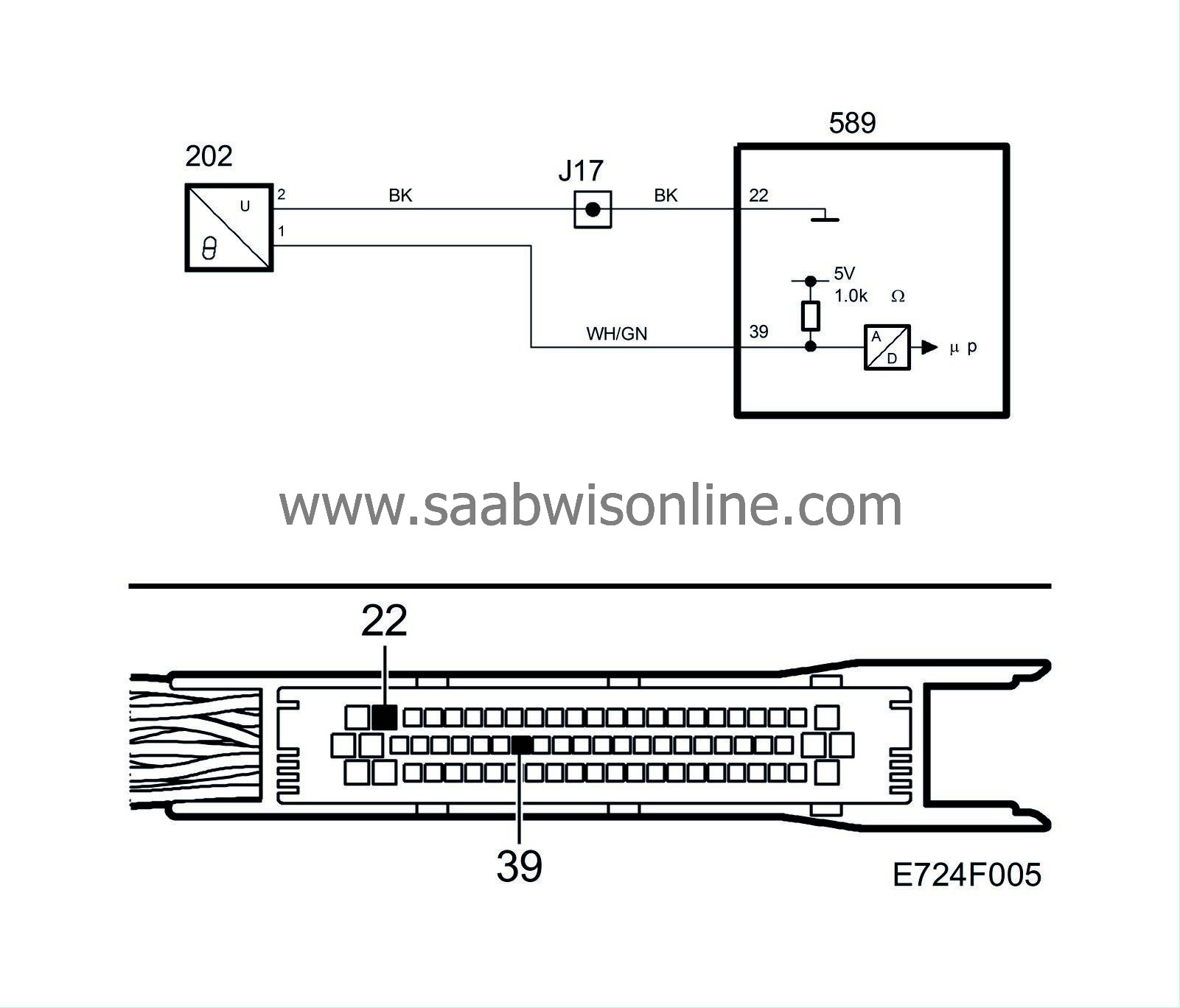P0115
Read the instructions below then
start the fault diagnostic procedure.
Symptom: CHECK ENGINE.
A/C malfunctioning.
Radiator fan running continuously when ignition is ON.
Temperature gauge displaying incorrect value.
Possible starting problem or misfiring before diagnostic trouble code is generated.
Engine Coolant Temperature Circuit. Performance Problem .

Fault symptoms
|
•
|
Radiator fan running continuously when ignition is ON.
|
|
•
|
Temperature gauge displaying incorrect value.
|
|
•
|
Possible starting problem or misfiring before diagnostic trouble code is generated.
|
On-Board Diagnostics
Type of diagnosis:
|
-
|
Once per driving cycle. Interrupted when fault criteria fulfilled or OK reported. Restarts next driving cycle.
|
Enable criteria:
|
-
|
General criteria for this diagnostic trouble code: Atmospheric pressure must exceed 72 kPa and coolant and intake air temperature must exceed -7°C.
|
|
-
|
Crankshaft has rotated more than 4000 engine revolutions since start.
|
Fault criteria:
|
-
|
Coolant temperature has changed less than 1°C since start
|
Dependents:
System reaction to a fault
:
|
-
|
A substitute value is calculated continuously as follows: Starting intake air temperature is incremented with 1°C per 60 g air mass/s. The value is maximized to 90°C and is used as soon as fault criteria for the sensor are fulfilled.
|
OK report:
|
-
|
Enable criteria fulfilled without any faults being reported.
|
Fault handling:
(See section
Fault handling III, other emission-related components and functions
for more information.)
Diagnostic help
Fault diagnosis concerns an electrical fault in connecting leads or in the sensor.
Functions in the diagnostic tool related to the fault:
|
•
|
Diagnostic status for the diagnosis.
|
|
•
|
Temperature sensor reading, in °C.
|
See also the description of readings under
Menu "Read Values"
for more information.
Checking the wiring
Jiggle the wiring harness at several points and in different directions to detect intermittent breaks and short circuits. Observe the multimeter, diagnostic tool or test lamp during the check.



